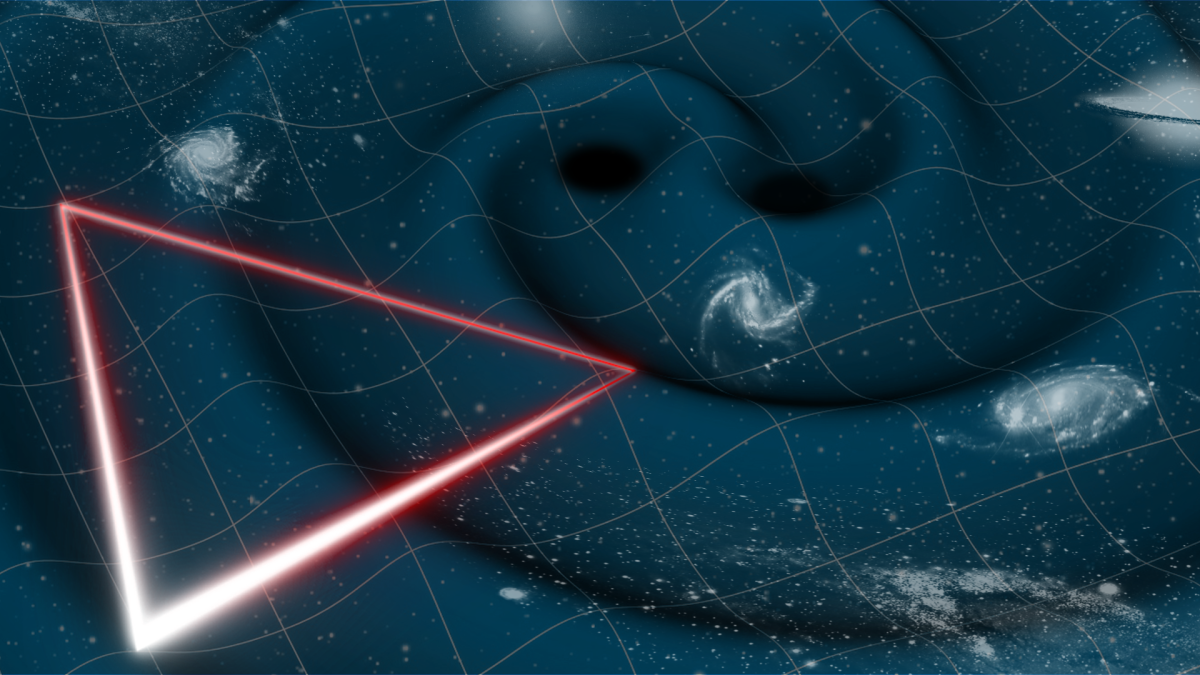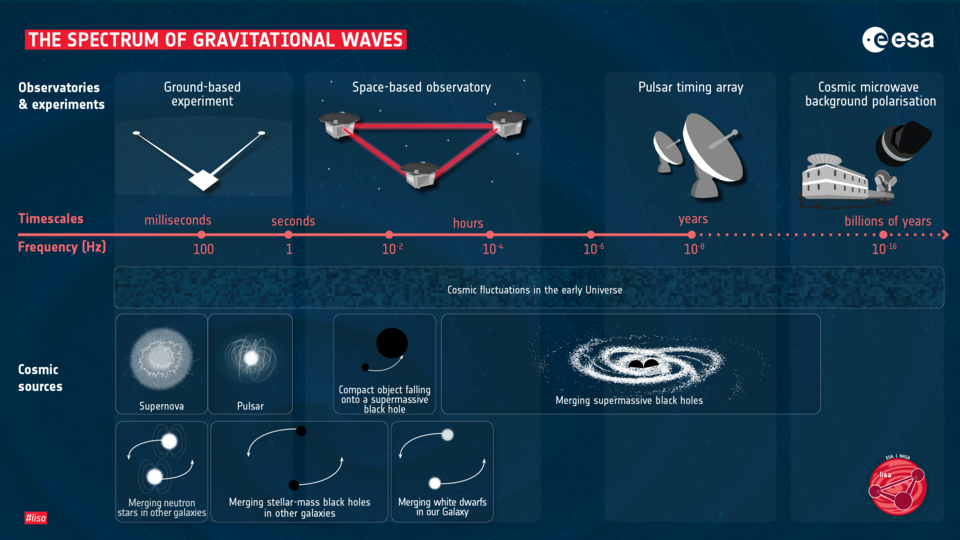
Illustration showing two black holes merging and creating ripples in the fabric of spacetime. Some galaxies are visible in the background. In the foreground, the shape of a triangle is traced by shining red lines. It is meant to represent the position of the three LISA spacecraft and the laser beams that will travel between them. Credit: ESA
The NANOGrav Collaboration congratulates the Laser Interferometer Space Antenna (LISA) Consortium on the European Space Agency's (ESA) adoption decision allowing the space-based LISA gravitational wave observatory to move forward to the next stage.
Together the LIGO-Virgo-KAGRA (LVK) Consortium, LISA, and the International Pulsar Timing Array (IPTA)-- of which NANOGrav is a part -- will be exploring the gravitational universe, with a plethora of exciting new sources expected in the LISA band. Especially intriguing is the possibility of a cosmological gravitational-wave background observable by all three collaborations!

Gravitational waves are ripples in spacetime produced by the acceleration of very massive objects, such as black holes coming together and merging. Different objects in space produce gravitational waves of different timescales, ranging from milliseconds to billions of years. This diagram showcases how different experiments are sensitive to different parts of this spectrum. Credit: ESA